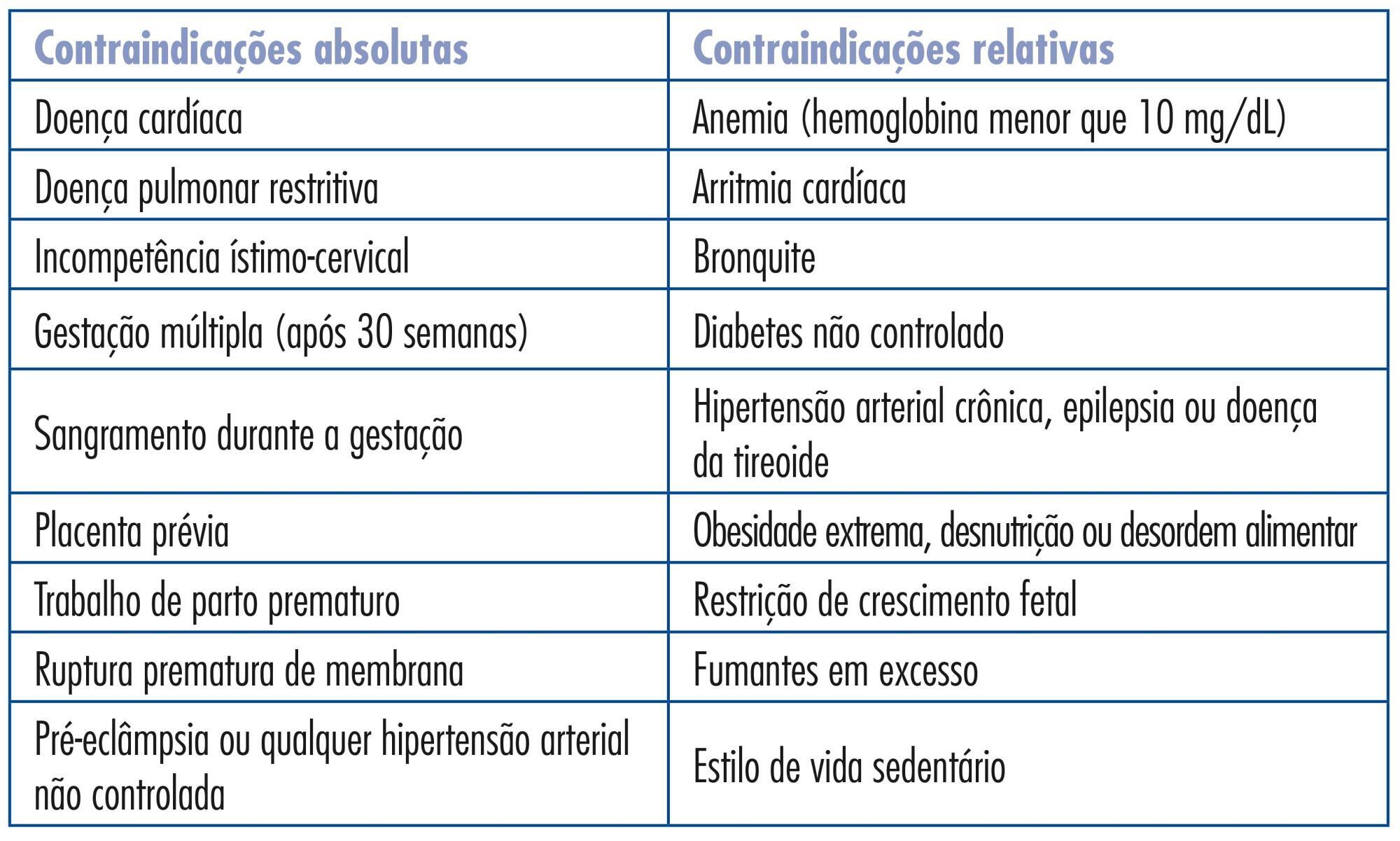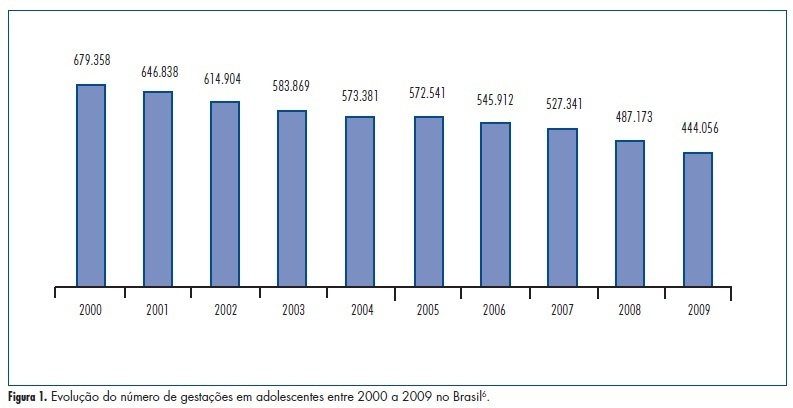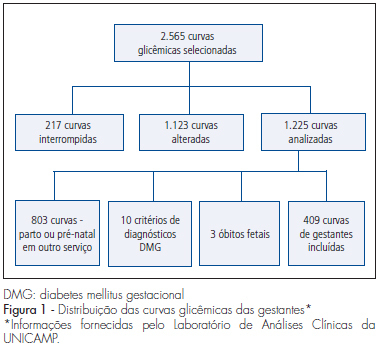You searched for:"João Luiz Pinto e Silva"
We found (22) results for your search.Summary
Revista Brasileira de Ginecologia e Obstetrícia. 2019;41(9):531-538
To determine the effect of treadmill walking on maternal heart rate (MHR) and cardiotocographic parameters (basal fetal heart rate [FHR], active fetal movements [AFM], number of accelerations and decelerations, and short-term variation [STV] and long-term variation [LTV] of fetal heart rate) in pregnant women at 36 weeks.
A nonrandomized, open clinical trial involving 88 healthy pregnant women submitted to moderate intensity walking and computed cardiotocography in 3 20- minute periods (resting, treadmill walking, and postexercise recovery).
The mean FHR decreased during walking (resting: 137 bpm; treadmill: 98 bpm; recovery: 140 bpm; p<0.001), with bradycardia occurring in 56% of the fetuses in the first 10minutes of exercise, and in 47% after 20minutes. Bradycardia was not detected in the other phases. The mean STV and HV were 7.9, 17.0, and 8.0 milliseconds (p<0.001) and 7.6, 10.8 and 7.6 bpm (p=0.002) in the resting, walking and recovery phases, respectively. Themean number of fetalmovements in 1 hour was 29.9, 22.2 and 45.5, respectively, in the 3 periods (p<0.001). In overweight/obese women, the mean FHR was lower (p=0.02). Following the logistic regression analysis, two variables remained significantly associated with bradycardia: maternal fitness in the 28th week of pregnancy (protective effect) and maternal weight (increased risk).
In healthy fetuses, physical exercise proved to be safe, since, although FHR and AFM decreased during treadmill walking, an increase in SVT and LTV was observed.

Summary
Revista Brasileira de Ginecologia e Obstetrícia. 2017;39(2):41-43
Summary
Revista Brasileira de Ginecologia e Obstetrícia. 2016;38(11):545-551
To determine methods of contraception used by adolescents before and after pregnancy.
A cross-sectional study was performed, and data were collected from medical records of all teens in puerperal consultation at the Hospital da Mulher - José Aristodemo Pinotti (Caism), Universidade Estadual de Campinas (CAISM), São Paulo, Brazil, between July 2011 and September 2013. The inclusion criterionwas being 10 to 19 years old, and the exclusion criterion was having a first consultation 90 days after childbirth. Statistical analyseswere performed with averages, standard deviations, percentages, correlations and Fisher's exact tests using the SAS program, version 9.4.
A total of 196 adolescents in postpartum consultation were included (44 days after childbirth on average). The majority was older than 14 years (89%), with an average age of 16.2 years, and the most were exclusively breast-feeding (70%). Before pregnancy, the use of any contraceptive methods was mentioned by 74% adolescents; the most frequent use was combined oral contraceptive followed by condom. The main reason for abandoning the use of contraception was the occurrence of an unintended pregnancy (41%), followed by reports of side effects (22%), behavior issues (18%) and desire for pregnancy (16%). A positive correlation was found between the age of the adolescent at the moment of childbirth, the age of menarche (r = 0.3), and the first sexual intercourse (r = 0.419). Vaginal delivery occurred in 76% of the cases. After birth, depot medroxyprogesterone acetate (DMPA) was the contraception method most frequently used (71%), followed by oral contraceptives (11.8%) and intrauterine devices (IUDs, 11.2%).
The most prescribed contraceptive method before pregnancy in adolescents who had childbirth was combined oral contraceptives. Many of the study participants had an unintended pregnancy. After childbirth, the most used contraceptive method was DMPA. To improve contraception and reduce the chance of unintended pregnancies among adolescents, we should promote the use of long-acting reversible contraceptives (LARCS).
Summary
Revista Brasileira de Ginecologia e Obstetrícia. 2014;36(12):531-534
Summary
Revista Brasileira de Ginecologia e Obstetrícia. 2014;36(9):423-431
DOI 10.1590/SO100-720320140005030
Physical exercise is recommended for all healthy pregnant women. Regular practice of exercises during pregnancy can provide many physical and psychological benefits, with no evidence of adverse outcomes for the fetus or the newborn when exercise is performed at mild to moderate intensity. However, few pregnant women engage in this practice and many still have fears and doubts about the safety of exercise. The objective of the present study was to inform the professionals who provide care for Brazilian pregnant women about the current recommendations regarding physical exercise during pregnancy based on the best scientific evidence available. In view of the perception that few systematic models are available about this topic and after performing several studies in this specific area, we assembled practical information of interest to both the professionals and the pregnant women. We also provide recommendations about the indications, contraindications, modalities (aerobics, resistance training, stretching and pelvic floor training), frequency, intensity and duration indicated for each gestational trimester. The review addresses physical exercise recommendation both for low risk pregnant women and for special populations, such as athletes and obese, hypertensive and diabetic subjects. The advantages of an active and healthy lifestyle should be always reinforced during and after gestation since pregnancy is an appropriate period to introduce new habits because pregnant women are usually more motivated to adhere to recommendations. Thus, routine exams, frequent returns and supervision are recommended in order to provide new guidelines that will have long-term beneficial effects for both mother and child.

Summary
Revista Brasileira de Ginecologia e Obstetrícia. 2012;34(8):347-350

Summary
Revista Brasileira de Ginecologia e Obstetrícia. 2011;33(10):286-291
DOI 10.1590/S0100-72032011001000003
PURPOSES: To determine the rate of low birth weight and some of the risk factors associated with this event among adolescents. METHODS: A cross-sectional study conducted between October 1994 and December 2009 at a maternity in Campinas, in Brazil, using information generated from the computerized obstetric form. After selection of adolescents who delivered at this hospital, two groups were created, with and without low birth weight, respectively. Relative risk and 95% confidence interval for all independent variables (risk factors) and the Χ2 test for some perinatal results were performed. The level of significance was set at 5%. RESULTS: During the study period, 24,000 births occurred at CAISM. Of these, 2,404 occurred among 2,357 teenagers (10.02%) and the frequency of low birth weight was 15.1%. Adolescent pregnancy recurred in 294 (8.2%). Age less than 15 years-old, anemia, smoking, and hypertension were not significantly associated with low birth weight. Antecedent of miscarriage and association with systemic lupus erythematosus increased the risk of low birth weight. Cesarean section and an Apgar score below seven were more prevalent among adolescents with low birth weight, and 85% of all adolescents had less than six prenatal visits. CONCLUSIONS: The prevalence of low birth weight is higher among adolescents than among adult women, and there was a large number of adolescents with less than six prenatal visits . The antecedent of miscarriage and the presence of systemic lupus erythematosus were risk factors associated with the occurrence of low birth weight among adolescents.
Summary
Revista Brasileira de Ginecologia e Obstetrícia. 2011;33(2):81-86
DOI 10.1590/S0100-72032011000200005
PURPOSE: to determine the prevalence of adverse gestational and neonatal outcomes in women with a positive screening and negative diagnosis for gestational diabetes mellitus (GDM). METHODS: a retrospective descriptive cross-sectional study was conducted from 2000 to 2009 on 409 women with positive screening for GDM. The maternal variables studied were: age, body mass index, history of cesarean section, macrosomia or diabetes mellitus in a previous pregnancy and a personal or family history of diabetes mellitus and chronic arterial hypertension. The neonatal variables studied were: polyhydramnios, gestational age at birth, prematurity, cesarean delivery, large for gestational age (LGA) newborn, macrosomia, Apgar score, neonatal respiratory distress syndrome, hypoglycemia and hyperbilirubinemia. Uni- and multivariate descriptive analyses were first performed regarding risk factors and neonatal outcome and the prevalences and respective 95% confidence intervals were determined. RESULTS: the route of delivery was cesarian section in 255 cases (62.3%), preterm birth occurred in 14.2% of cases and 19.3% of the newborns were LGA. The risk factors correlated with LGA newborns were overweight or obesity, maternal age and a history of macrosomia in a previous pregnancy. CONCLUSIONS: a high rate of LGA newborns was observed in the population with positive risk factors or altered fasting glycemia on the occasion of the first prenatal visit, even when the glycemia curve was normal, with cesarean rates above those habitually observed in populations considered to be of low risk. Pregnant women with these characteristics represent a differential group.
